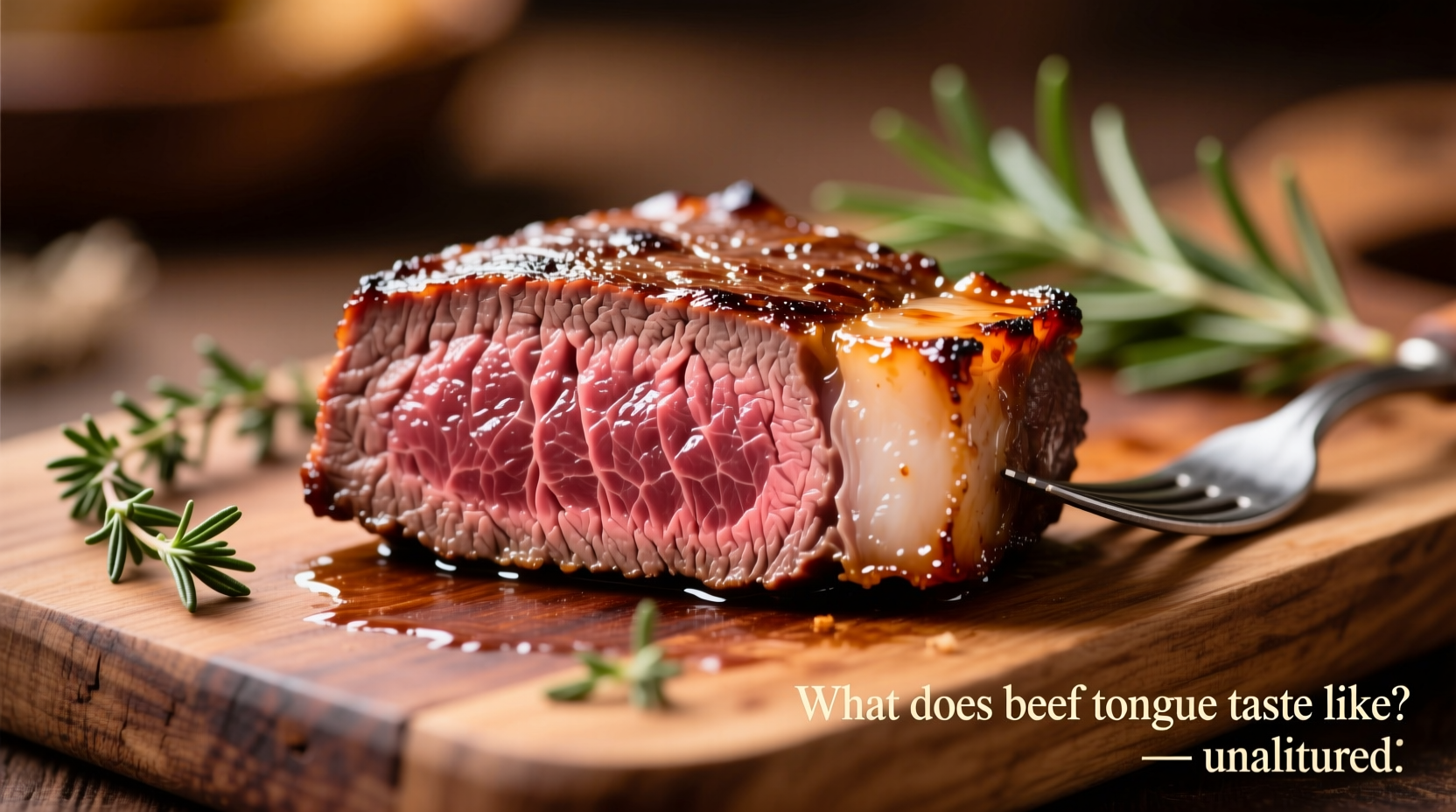Curious about trying beef tongue but unsure what to expect? You're not alone. Many home cooks hesitate to experiment with this traditional cut, often wondering: Is beef tongue chewy? Does it taste like regular steak? Will my family enjoy it? Let's cut through the uncertainty with clear, practical insights from culinary science and global cooking traditions.
Understanding Beef Tongue's Unique Composition
Beef tongue isn't just another muscle cut—it's a specialized organ meat with distinct characteristics. Composed primarily of striated muscle fibers designed for constant movement, it contains more connective tissue than standard cuts. When cooked properly using low-and-slow methods, this collagen transforms into gelatin, creating that signature tender texture.
The USDA Food Safety and Inspection Service confirms beef tongue contains approximately 18 grams of protein per 3-ounce serving, along with significant amounts of vitamin B12 (providing 60% of daily value) and zinc. Its fat marbling, concentrated along muscle fibers, delivers rich flavor without excessive greasiness when prepared correctly.
Flavor Profile Breakdown: What Makes Beef Tongue Special
Unlike leaner cuts, beef tongue offers a complex sensory experience:
- Primary taste: Deep, clean beef flavor—less gamey than liver but richer than sirloin
- Texture evolution: Starts firm when raw, becomes fork-tender after 3-4 hours of braising
- Aftertaste: Mildly sweet with subtle umami notes, especially when simmered with aromatics
- Marinade response: Absorbs flavors exceptionally well due to porous muscle structure
Culinary chemists at the Institute of Food Technologists note that the unique combination of muscle fiber density and fat distribution creates what they call "flavor layering"—where initial meaty notes gradually give way to more complex undertones as you chew.
Beef Tongue vs. Other Popular Cuts: A Practical Comparison
| Characteristic | Beef Tongue | Chuck Roast | Short Ribs |
|---|---|---|---|
| Flavor Intensity | Rich, concentrated beefiness | Moderate beef flavor | Very rich, fatty |
| Texture (Properly Cooked) | Smooth, melt-in-mouth | Fibrous, shredable | Fall-off-the-bone |
| Cooking Time for Tenderness | 3-4 hours | 2-3 hours | 2.5-3.5 hours |
| Best Preparation Method | Braising or smoking | Slow roasting | Braising |
Cultural Context: Why Tongue Features in Global Cuisines
Beef tongue's culinary journey spans continents and centuries. According to anthropological research published in Gastronomica: The Journal of Food and Culture, nose-to-tail eating traditions made tongue a prized cut among European butchers as early as the 17th century. In Mexico, lengua tacos became street food staples through resourceful use of affordable cuts. Korean BBQ restaurants feature thinly sliced grilled tongue (mangosa) as a delicacy, while Jewish communities traditionally serve braised tongue for holidays.
This global adoption isn't accidental—tongue's dense muscle structure withstands long cooking times better than many other cuts, making it ideal for traditional slow-cooking methods across cultures. Food historians note that pre-refrigeration, tongue's natural fat content helped preserve it longer than leaner cuts.
Maximizing Flavor: Proven Cooking Techniques
The secret to delicious beef tongue lies in technique, not just ingredients. Drawing from professional kitchen experience, here's what actually works:
- The 3-Step Cleaning Process: Blanch in boiling water for 15 minutes, scrape off the white membrane, then soak in vinegar water (1:4 ratio) for 30 minutes before cooking
- Ideal Cooking Method: Simmer gently at 180-200°F (82-93°C) for 3-4 hours—higher temperatures make it tough
- Flavor Boosters: Add 2 bay leaves, 1 onion studded with cloves, and 2 carrots to the cooking liquid
- Doneness Test: Insert a skewer—it should slide in with no resistance when properly tender
Food safety guidelines from the USDA recommend cooking beef tongue to an internal temperature of 160°F (71°C) for safety, though many chefs prefer 190-200°F (88-93°C) for optimal texture. The tongue will continue tenderizing as it rests in its cooking liquid.
First-Timer's Guide: Making Your First Beef Tongue Experience Successful
If you're new to cooking tongue, start simple. Try this approachable method:
- Clean using the 3-step process above
- Simmer with basic aromatics (onion, garlic, peppercorns) for 3.5 hours
- Cool slightly, peel off remaining membrane
- Slice 1/4-inch thick against the grain
- Sear slices in hot skillet for 1-2 minutes per side
- Serve with chimichurri or your favorite sauce
The initial texture might surprise you—it's more substantial than cooked brisket but less fibrous than flank steak. Don't expect liver-like intensity; think of it as the most flavorful bite of pot roast you've ever had. Many first-timers report it tastes "like beef, but better"—richer without being fatty.

Where to Find Quality Beef Tongue
Your best options:
- Local butcher shops: Often carry it frozen or fresh (call ahead)
- Latin American markets: Typically sell it fresh for lengua tacos
- Asian grocery stores: Korean and Chinese markets frequently stock it
- Online retailers: Specialty meat purveyors ship vacuum-sealed portions
When selecting, look for pale pink color with creamy white fat streaks—avoid any with grayish tints or excessive browning. Fresh tongue should feel firm but yielding to pressure. Properly stored, it keeps 3-5 days refrigerated or up to 6 months frozen.
Practical Considerations: When Beef Tongue Might Not Work
While versatile, beef tongue has some limitations:
- Time commitment: Requires 4+ hours of cooking time (not ideal for weeknight meals)
- Texture sensitivity: Overcooking makes it mushy; undercooking leaves it rubbery
- Visual factor: The whole tongue's appearance can be off-putting to some diners
- Dietary considerations: Higher in cholesterol than leaner cuts (220mg per 3oz serving)
For families with texture-sensitive eaters, consider incorporating finely diced cooked tongue into meatloaf or chili where its flavor enhances the dish without presenting texture challenges.











 浙公网安备
33010002000092号
浙公网安备
33010002000092号 浙B2-20120091-4
浙B2-20120091-4